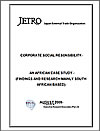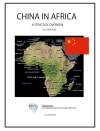BOP Report(Bottom of the Pyramid)
All data are collected in the Fiscal Year of 2008-2009.
7. Shaping Aspirations
Sustainable product innovations initiated in Tier 4, and promoted through consumer education, will not only positively influence the choices of people at the bottom of the pyramid, but may ultimately reshape the way Americans and others in Tier 1 live. Indeed, in 20 years, we may look back to see that Tier 4 provided the early market pull for disruptive technologies that replaced unsustainable technologies in developed countries and advanced the fortunes of MNCs with foresight.
For example, Unilever’s HLL subsidiary has tackled the lack of practical, inexpensive, low-energy-consuming refrigeration in India. HLL’s laboratories developed a radically different approach to refrigeration that allows ice cream to be transported across the country in standard nonrefrigerated trucks. The system allows quantum reductions in electricity use and makes dangerous and polluting refrigerants unnecessary. As a bonus, the new system is cheaper to build and use.
Electricity, water, refrigeration, and many other essential services are all opportunities in developing countries. A U.S.-based NGO, the Solar Electric Light Fund (SELF), has creatively adapted technology and applied microcredit financing to bring electrical service to people in remote villages in Africa and Asia who otherwise would spend money to burn hazardous kerosene, candles, wood, or dung for their light and cooking. SELF’s rural electrification system is based on small-scale on-site power generation using renewable resources. A revolving loan fund gives villagers the financial means to operate these electrical systems themselves, also creating jobs. Since its founding in 1990, SELF has launched projects in China, India, Sri Lanka, Nepal, Vietnam, Indonesia, Brazil, Uganda, Tanzania, South Africa, and the Solomon Islands.
The success of SELF and other NGOs focused on small-scale distributed energy solutions has begun to attract the attention of Western companies such as the U.S.’s Plug Power Inc. (fuel cells) and Honeywell Inc. (microturbines). They see the logic in moving into a wide-open market in Tier 4 rather than trying to force their technology prematurely into applications for the developed markets, where incumbents and institutions stand in their way. With several billion potential customers around the world, investments in such innovations should be well worth it.
目次
- 1. Reperceiving Business from the Bottom Up
- 2. Bop in Brief
- 3. Four Consumer Tiers
- 4. The Invisible Opportunity
- 5. Tier 4 Pioneer
- 6. Creating Buying Power
- 7. Shaping Aspirations
- 8. Improving Access
- 9. Tailoring Local Solutions
- 10. Putting It All Together
- 11. A Common Cause
- 12. BOP Experiments in the Field
- 13. A BOP Typology
- 14. What's Next for BOP?
- 15. How to Get Started: The Conceptual Framework for BOP Innovation
- 16. BoP Conferences
- 17. Case Studies and Relevant Reference Material
- Bibliography




